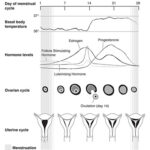Hurricanes, also known as tropical cyclones, are some of the most powerful and destructive weather events on Earth. But where do hurricanes actually form? These formidable storms don’t just appear anywhere; their development is governed by specific oceanic and atmospheric conditions. Understanding where hurricanes originate is crucial for predicting and preparing for these natural disasters.
The Recipe for Hurricane Formation
Several key ingredients must come together in the right proportions to create a hurricane. These conditions are most commonly found in tropical regions:
- A Pre-existing Weather Disturbance: Hurricanes often begin as a tropical wave, which is essentially a low-pressure area moving through the tropics. These waves can enhance thunderstorm activity, providing the initial spark for hurricane development.
- Warm Ocean Water: Warm water is the primary fuel for hurricanes. The ocean surface temperature needs to be at least 26.5 degrees Celsius (around 80 degrees Fahrenheit) and this warmth should extend to a depth of at least 50 meters. This warm water provides the necessary heat and moisture that power the storm.
- Thunderstorm Activity: Thunderstorms play a vital role in the early stages of hurricane formation. They help to convert the heat energy from the warm ocean water into the energy that drives the hurricane.
- Low Wind Shear: Wind shear, which is a significant change in wind speed or direction with height, can be detrimental to hurricane formation. High wind shear can disrupt the developing storm’s structure and weaken it. Low wind shear allows the storm to organize and intensify.
Even when all these ingredients are present, a hurricane is not guaranteed to form. It’s a complex process, and the conditions need to be just right.
The Formation Process Explained
Hurricanes typically form in tropical and subtropical waters. The process often starts with a tropical wave moving westward across the warm ocean.
As this weather disturbance moves, the warm ocean water heats the air above it, causing the air to rise. This rising warm, moist air creates an area of low pressure at the surface. The lower pressure causes surrounding air to rush in to replace the rising air. This air, in turn, also warms and rises.
As the air rises, it cools and water vapor within it condenses to form clouds and thunderstorms. Condensation releases heat, known as latent heat, which further warms the surrounding air and fuels the upward motion. This creates a positive feedback loop, intensifying the storm.
If the conditions are favorable, and particularly if wind shear is low, this organized system of thunderstorms can begin to rotate due to the Earth’s rotation (the Coriolis effect). As the storm intensifies, it develops a defined circulation and an eye at the center. When sustained wind speeds reach 74 mph (119 km/h), the storm is classified as a hurricane (or typhoon or cyclone, depending on the region).
Hurricanes are incredibly energetic systems. A single hurricane can release vast amounts of energy. The energy generated by the winds of a hurricane can be equivalent to about half the electrical generating capacity of the entire world. Furthermore, the heat released by cloud and rain formation in a hurricane can be several times greater than that.
In conclusion, hurricanes form over warm, tropical ocean waters where specific atmospheric conditions are present. The combination of a pre-existing disturbance, warm ocean temperatures, thunderstorm activity, and low wind shear creates the perfect environment for these powerful storms to develop and intensify. Understanding these formation conditions is vital for meteorologists to predict and track hurricanes, helping to protect communities in their path.

